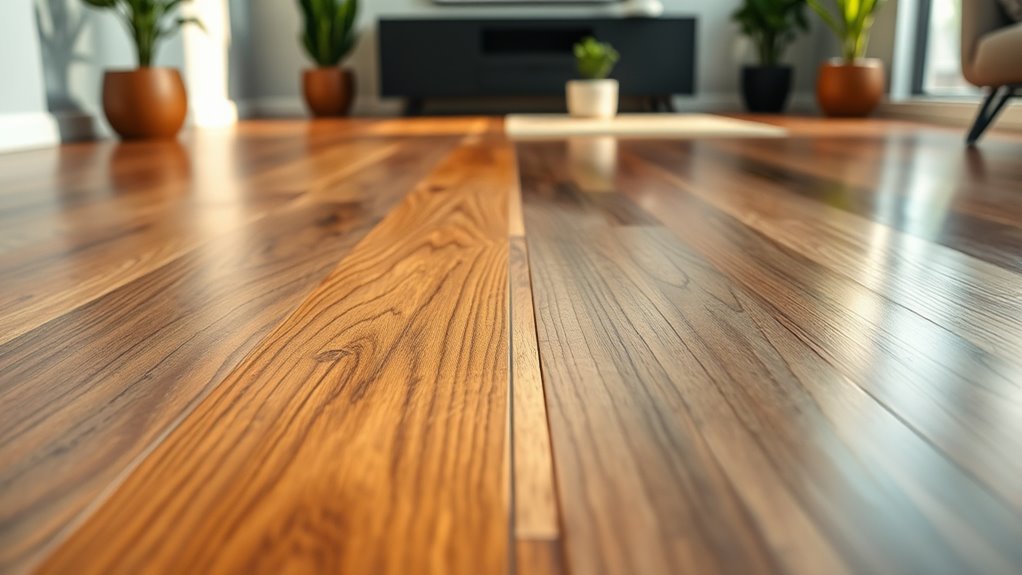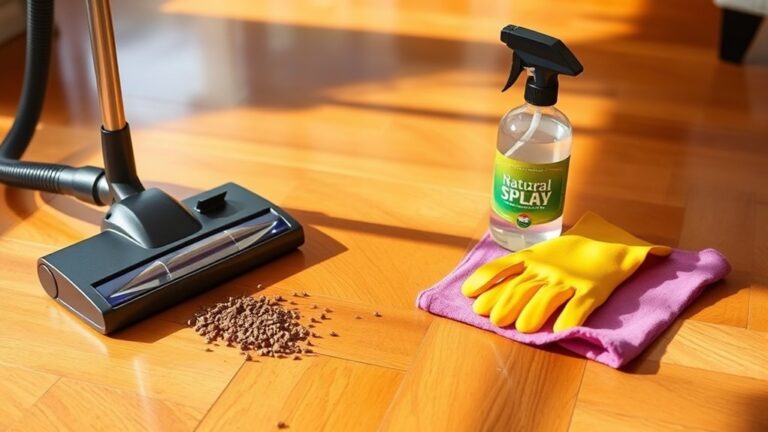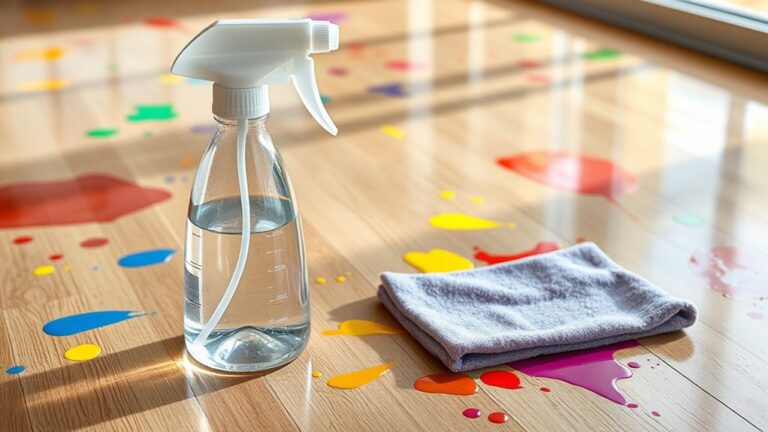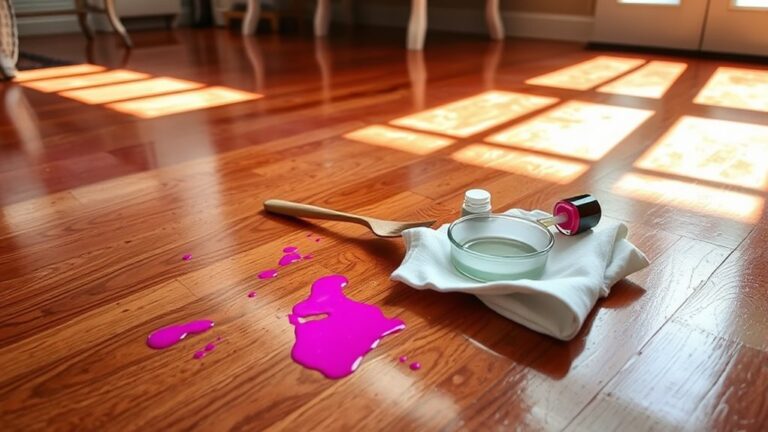If you need flooring that’s durable, water-resistant, and easy to maintain, vinyl often beats laminate, especially in moisture-prone areas. Vinyl’s flexibility in design and straightforward installation make it a practical choice for busy homes. Laminate suits low-moisture spaces but may scratch more easily and has limited water resistance. Both offer style options, but vinyl’s waterproof nature and shock absorption add real value. Keep exploring to understand how each fits different lifestyles and budgets.
Understanding Vinyl Flooring
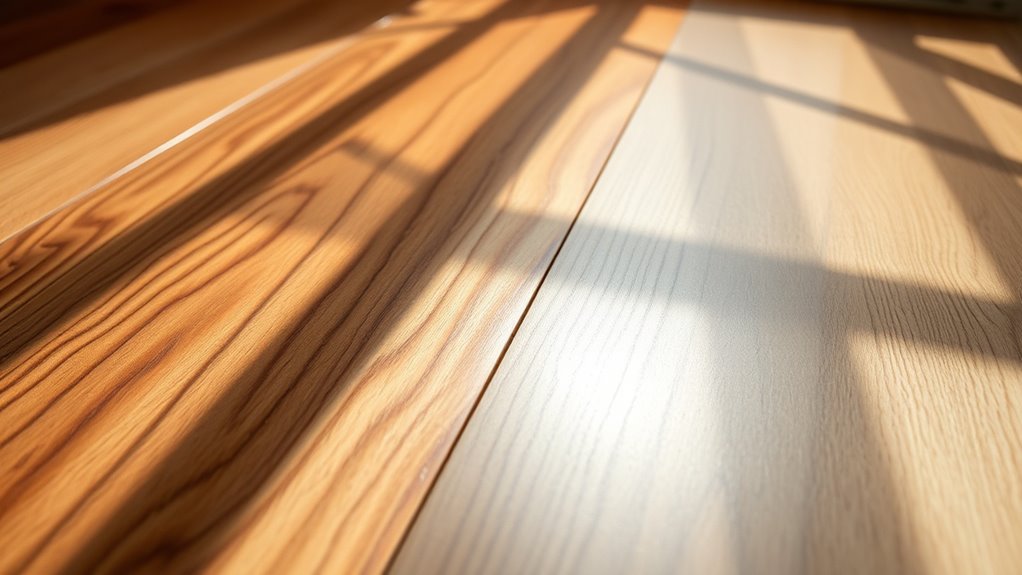
Vinyl Bodenbelag is a versatile and durable option that’s become increasingly popular for both residential and commercial spaces. When you consider vinyl benefits, its water resistance, ease of maintenance, and affordability stand out. Whether you’re renovating your kitchen, bathroom, or office, vinyl applications offer you flexibility with styles—from wood-look planks to vibrant patterns. You don’t need to worry about scratches or stains, making it ideal for high-traffic areas or homes with pets and kids. Plus, vinyl’s resilience means it can handle moisture-heavy environments without warping. If you want freedom in design and practicality, vinyl flooring gives you both, providing a reliable surface that matches various lifestyles without compromising on aesthetics or durability.
Laminatböden verstehen
When you look at laminate flooring, you’ll find it’s made of several layers, including a high-density fiberboard core and a photographic layer that mimics wood or stone. This structure gives laminate its strength and resistance to scratches and dents, making it a durable choice for busy areas. To keep it looking good, you’ll want to clean it regularly and avoid excessive moisture, as water can damage the core over time.
Composition and Structure
Although it might look like real wood, laminate flooring is actually made up of several distinct layers designed to provide durability and aesthetic appeal. At its core, a high-density fiberboard (HDF) or medium-density fiberboard (MDF) gives laminate its structural integrity, supporting weight and resisting impact. Above this, a photographic applique layer mimics the appearance of wood, stone, or other materials. A transparent melamine resin wear layer protects the design from scratches and stains. These material differences set laminate apart from vinyl, influencing both feel and performance. Understanding this layered construction helps you appreciate laminate’s balance between realistic looks and strength, offering you freedom to choose flooring that fits your lifestyle and design goals without compromising on quality or resilience.
Durability and Maintenance
Because laminate flooring combines a durable wear layer with a sturdy fiberboard core, it offers solid resistance to scratches, dents, and everyday wear. You’ll appreciate its excellent scratch resistance, especially in high-traffic areas or homes with pets. When it comes to maintenance, laminate is easy to clean—regular sweeping and occasional damp mopping keep it looking fresh without special treatments. In a lifespan comparison, laminate generally lasts 10 to 25 years, depending on quality and care. While it’s less water-resistant than vinyl, prompt cleanup of spills can prevent damage. If you want a resilient, low-maintenance option that stands up well to daily use, laminate flooring provides a good balance of durability and ease, freeing you from constant upkeep worries.
Durability and Wear Resistance
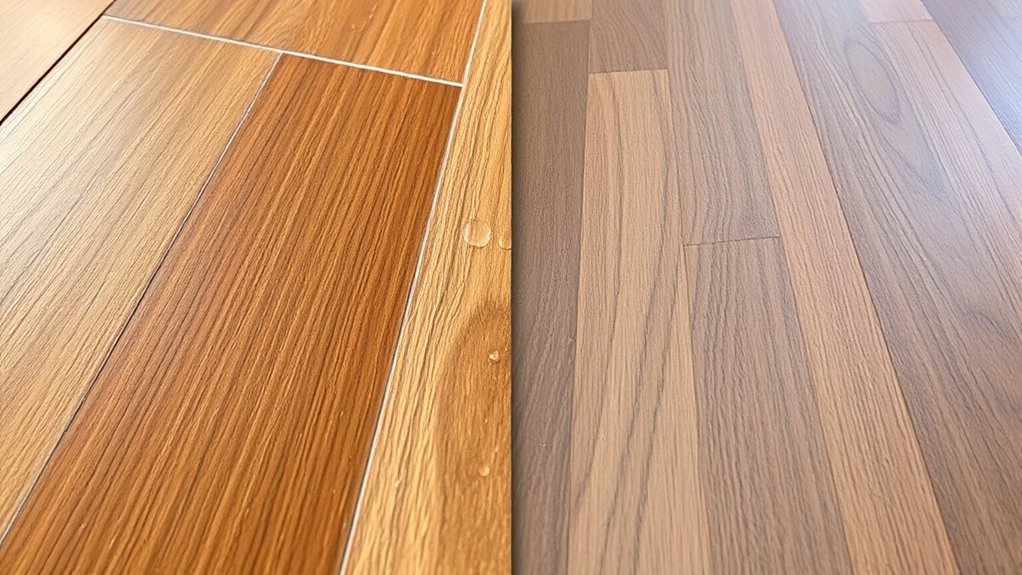
Both vinyl flooring and laminate offer strong durability, but their wear resistance varies depending on the environment and usage. If you’re worried about scratch resistance, vinyl generally has an edge due to its resilient wear layers designed to handle daily scuffs and abrasions. Laminate performs well too, thanks to its tough melamine surface, but it can show scratches more easily under heavy traffic. When it comes to impact resistance, vinyl’s flexibility helps it absorb shocks better, reducing dents or cracks if you drop something heavy. Laminate, being more rigid, can chip or crack under similar conditions. So, if your lifestyle demands flooring that stands up to rougher treatment without showing wear, vinyl may give you more freedom to live boldly without constant worry about damage.
Water and Moisture Resistance
When you’re choosing between vinyl and laminate flooring, understanding their waterproof capabilities is essential. Vinyl is typically fully waterproof, making it ideal for areas with high moisture, while laminate can be more vulnerable to water damage and swelling. You’ll also want to contemplate how each material handles humidity, especially in spaces like kitchens or basements where moisture levels fluctuate.
Waterproof Capabilities Comparison
Durability against water damage is an essential factor to take into account when choosing between vinyl flooring and laminate. Vinyl flooring typically offers superior waterproof capabilities due to its built-in moisture barrier, which prevents water from seeping through and causing damage. This feature makes vinyl ideal for areas prone to spills or dampness, allowing you the freedom to install it in kitchens, bathrooms, or basements without worry. Laminate flooring, on the other hand, generally has a higher water retention risk because its core is made from wood-based materials that can swell when exposed to moisture. While some laminate products have improved water-resistant coatings, they still can’t match the moisture barrier effectiveness of vinyl. So if waterproofing is a priority, vinyl flooring usually gives you more reliable protection and peace of mind.
Effects of Humidity
Although humidity can be challenging to manage, understanding how vinyl and laminate flooring react to moisture is essential for maintaining your floors’ longevity. Vinyl flooring excels in resisting humidity effects because it’s made with waterproof materials that prevent moisture absorption. This means you can confidently install vinyl in areas prone to dampness without worrying about warping or swelling. Laminate, however, is more susceptible to moisture absorption due to its wood-based core. When exposed to high humidity or spills, laminate can expand, buckle, or even develop mold if not dried properly. If you want freedom from constant moisture worries, vinyl flooring offers a more reliable solution. It handles humidity better, preserving your floor’s appearance and structure over time with minimal maintenance.
Installation Process and Cost
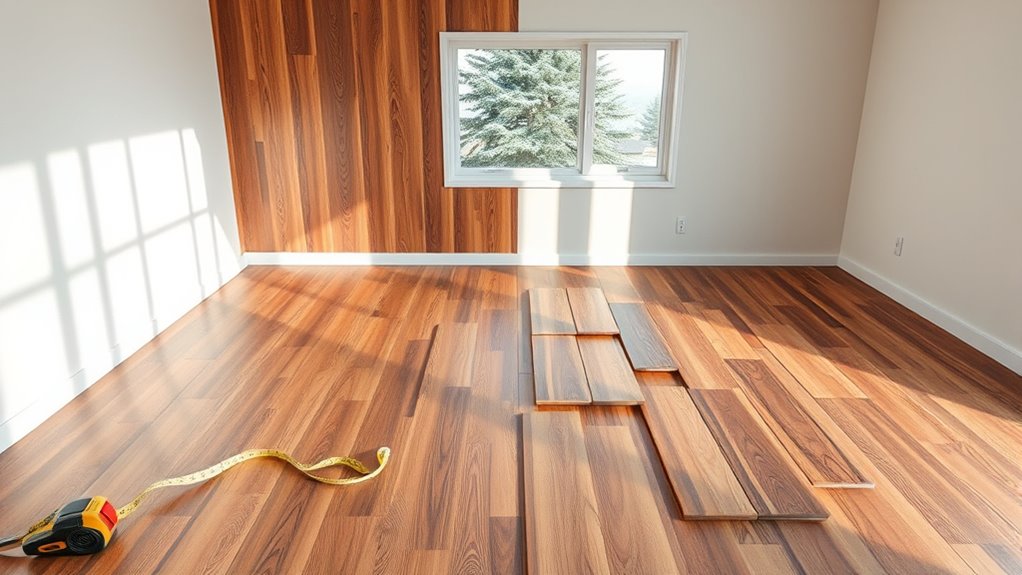
Installing vinyl flooring or laminate involves different steps and costs that can affect your budget and timeline. You’ll want to evaluate installation challenges and cost comparison to decide which suits your needs best. Vinyl is generally easier and faster to install, often featuring peel-and-stick or click-lock options, while laminate usually requires a floating floor method over an underlayment.
- Vinyl installation suits uneven subfloors better, reducing prep work.
- Laminate demands a flat, smooth surface, increasing labor time.
- Vinyl materials tend to cost less upfront, but quality varies.
- Laminate might cost more initially but offers durability that could save money long-term.
Knowing these factors helps you pick flooring that fits your freedom to install on your terms without unexpected expenses.
Maintenance and Cleaning Requirements
When it comes to maintenance and cleaning, vinyl flooring and laminate each have their own requirements that can impact how much time and effort you’ll spend keeping them looking their best. Vinyl is highly water-resistant, allowing you to clean spills immediately without worry. Laminate needs quicker attention to avoid moisture damage. Your cleaning frequency and maintenance tips will vary accordingly.
| Bodenbelagsart | Reinigungshäufigkeit | Wartungstipps |
|---|---|---|
| Vinyl | Weekly or as needed | Use gentle cleaners, avoid abrasives |
| Laminieren | Weekly, wipe spills ASAP | Avoid standing water, use dry mop |
| Both | Dust or sweep regularly | Protect surface with mats and furniture pads |
Knowing these details helps you choose freedom in how you care for your floors without extra hassle.
Aesthetic Options and Design Versatility
While both vinyl and laminate flooring offer a wide range of styles, you’ll find that vinyl provides greater design versatility with options that mimic natural materials like wood, stone, and tile more realistically. Vinyl’s expansive color options let you match any interior palette or emerging design trends effortlessly. You can customize your space with confidence, knowing the flooring complements your style.
Consider these aesthetic advantages of vinyl flooring:
Explore vinyl’s aesthetic benefits, including realistic textures, diverse colors, and adaptable patterns for personalized style.
- Textured finishes that replicate real wood grain or stone surfaces
- Wide spectrum of colors from neutral tones to bold hues
- Patterns and plank sizes adaptable to modern or classic interiors
- Ability to mix and match styles for a unique, personalized look
With vinyl, you’re free to explore creative flooring choices that align with your vision.
Environmental Impact and Sustainability
Because sustainability is becoming a priority for many homeowners, understanding the environmental impact of vinyl and laminate flooring is essential. Vinyl flooring is made primarily from PVC, which isn’t biodegradable and involves energy-intensive manufacturing. However, some brands focus on sustainable sourcing of raw materials and offer recycling options through take-back programs, helping reduce landfill waste. Laminate flooring, typically made from wood byproducts, may seem eco-friendlier, but it often contains formaldehyde-based adhesives and resins. Look for products with certifications verifying sustainable sourcing and low emissions. Both materials have recycling options, but availability varies by region. If reducing your carbon footprint matters, prioritize floors with transparent sourcing and end-of-life recycling plans—this way, you maintain your freedom to choose stylish floors while supporting a healthier planet.

